10 Reasons You’re Not Losing Weight and How to Fix Them
Over half of Americans say they’re trying to lose weight. It can often feel like you’re doing everything right, but you’re not losing weight.
You’ve tried the most recent fad diet and committed to a rigorous exercise regime, but the pounds aren’t shifting.
The answer has to be somewhere. Don’t give up just yet!
Instead, find out why losing weight is hard and what you can do to fix it. Check out below the tips for easy weight loss!
1. Not Getting Enough Protein
If you’re having a hard time losing weight, then you could still be eating the wrong things.
Even if you’ve reduced your overall consumption, you might need to increase your protein intake. You want to lose fat, not muscle.
People who eat a protein-rich diet (between 15 and 25% of overall calories) store nearly 50% of excess calories as muscle rather than fat. If your diet consists of only 5% proteins, then 95% of your excess calories are stored as fat, not muscle.
So make sure you’re eating plenty of eggs, lean meats, and legumes in your diet.
2. Dehydration
Apparently, 80% of working Americans don’t drink enough water on a regular basis. You may be eating great, but are you drinking enough water?
After all, up to 65% of the human body is made up of water. It’s essential to the healthy functioning of your body.
However, it’s also really important when it comes to weight loss. High water consumption can even improve your metabolism by up to 30%.

3. High-Stress Levels
We’re stressed!
It could be about our country’s future. Our personal finances. Or about work.
If you’re trying to lose weight, then high-stress levels are really not helping. There is a correlation between high stress and larger weight lines, according to studies.
You can either get started with mindful meditation, which has been shown to reduce mental stress and anxiety. Or you may need to make some drastic decisions about your work and home life. Either way, your stressful life could be responsible for not losing weight with diet and exercise.
4. You’re Click Happy
We quickly moving toward a cashless society. However, this could have some significant consequences for people trying to lose weight.
Studies have shown that people who use credit cards to pay for groceries online are more likely to make unhealthy purchases. Therefore, if you think you’re guilty of being “click happy” with your credit card, then it’s time to switch back to the green stuff.
5. Missing Out On Sleep
You may have trouble losing weight because you’re not getting enough sleep.
According to research, not enough sleep is one of the biggest risk factors for developing obesity. Therefore, the fact that more than one-third of Americans don’t get enough sleep is worrying.
If you want better sleep, you may need to consider when the best time to do exercise is to optimize your shut-eye. Or how you set a regular bedtime and wake-up time to improve your sleep patterns.
6. Lack of Vegetables and Fruits
Do you only ever buy food which has nutritional information on the label?
You don’t need to only purchase groceries which are labeled “low fat” or “no added sugar.”
Instead, why not purchase whole foods which don’t have any labels at all. Most importantly, you need to be eating fresh fruit and vegetables to lose weight.
By eating fresh fruit and veggies you can also maintain your healthy diet after you’ve achieved your weight loss goal.
7. Overeating
Do you ever think – “It’s healthy! I can eat as much of this as I want.” This is a dangerous game to play.
It’s also possible to overeat low-calorie and so-called “healthy” foods. Simply put, if you’re consuming calories that you’re not burning off, then you’re overeating.
Eating fruit can be essential to feed your cravings if you’re cutting out candy and chocolate. But, you can also eat too much of this good stuff too.
8. Drinking Calories
It’s so easy to concentrate too much on what you’re eating and forget that your drinks count as calories too.
If you often find yourself drinking lattes and smoothies instead of water, then you need to count those calories as well.
Although your regular black coffee doesn’t contain many calories, lattes and other milky coffee drinks do. Even a latte without sugar and low-fat milk contains up to 150 calories. However, if you’re choosing to add syrups and whole milk, you could be going over 400 calories.
When you consume sweet drinks, this also triggers your cravings for more food. So, you’re making it harder for yourself.
9. You’re Hungry
If you want to lose weight, you’re probably going to reduce the number of calories you are consuming. You can always go too far!
If you reduce your calories too much and too quickly, you could starve yourself. This slows down your metabolism so you can’t lose weight as easily.
If you’re eating less than 400 calories, your body could stop functioning normally. Your stress levels will increase and your thyroid hormones breakdown.

10. Run Don’t Walk
Even though any physical activity can contribute to a healthy lifestyle, if you want to lose weight, you need to do more than just walking.
Low-intensity workouts, such as walking with friends in the park, can be great, but you need to go up a gear as well.
You need to do moderate-intensity exercises if you want the pounds to fall off you. These include jogging, swimming, and cycling.
Why You’re Not Losing Weight
When you’re not losing weight with diet and exercise, it can be hard to stay motivated to achieve your weight loss goal. However, there are numerous reasons why you’re having a hard time losing weight.
Now you know what mistakes you need to watch out. It’s time to fix them and get back on track.
Do you want to find out more about how we can help you overcome your setback? Check out our 21 Day Transformation Challenge. Click Here.

You Might also like
-
Postpartum Weight Loss: 7 Daily Habits To Help You Shed That Baby Fat
Postpartum Weight Loss: 7 Daily Habits To Help You Shed That Baby Fat
You’re basking in the bliss of new motherhood, but those baby pounds just won’t drop. What can you do? Adapt these 7 Habits to aid postpartum weight loss.
The average woman should gain around 25 to 35 pounds during pregnancy. The amount you gain depends on your original weight pre-pregnancy.
After giving birth, you do lose some weight, however, your body won’t look the way it did before getting pregnant.
Are you ready to lose those baby pounds? Now is the time to do something about it and adopt a healthier, happier lifestyle.
Need some motivation? Keep reading to learn about 7 habits that can aid postpartum weight loss.
Where Does All the Baby Weight Go?
First thing, don’t be discouraged. Your body just did an amazing thing–you created a life and brought it into this world. For that, you should applaud your body.
Wondering where all that baby weight goes? Here’s a breakdown of the weight you gain during pregnancy–assuming you gain 35 pounds and you’re at a healthy weight pre-pregnancy:

- 8 pounds: Baby
- 2-3 pounds: Amniotic Fluid
- 4 pounds: Blood and other body fluids
- 5-9 pounds: Fat, protein, and nutrients
- 2-3 pounds: Breasts
- 2-5 pounds: Uterus
- 2-3 pounds: Placenta
As you can see, the weight you gain during pregnancy is needed to nourish your baby in utero and prepare your body for birth and breastfeeding.
How Much Weight Will I Lose Postpartum?
You’ll probably lose 10 to 12 pounds after giving birth. That’s the weight of your baby plus the placenta and other fluids.
A few days postpartum, you can expect to lose an additional 5 pounds of water weight.
If you’re breastfeeding, it will help your uterus contract back to its original size faster. You can expect your uterus to shrink back by about 6 weeks.
However, you may still look pregnant after a couple of months postpartum. Your abdominal muscles have stretched out, so you need exercise and time to get back into shape.

How Long After I Have the Baby Can I Begin a Weight Loss Plan?
Don’t expect to get back into shape a week or two after having your baby. In fact, it’s best to wait until your 6-week postpartum appointment so that your doctor can clear you for working out. You want to allow your body to rest for the first few weeks so that you don’t cause further injury or strain.
Make Realistic Goals
Remember that it took 9 months for you to gain the pregnancy weight, so you should expect around the same time to shed it. And if you gained more than 35 pounds, you might need longer to lose the weight.
You should aim to lose about a pound every week or two. If you lose the weight gradually, you’re more likely to keep it off and maintain your weight.
Losing Weight While Breastfeeding
Breastfeeding can help you lose the weight quicker. That’s because you can burn between 300-500 calories a day from breastfeeding.
However, you should wait at least six weeks before dieting if you’re breastfeeding. You want to first establish a regular milk supply, and cutting calories can affect your supply early on.
Habits to Aid Postpartum Weight Loss
Ready to start on your postpartum weight loss plan? Here are 7 daily habits to adopt.
1. Create a Workout Plan
The American College of Obstetricians and Gynecologists recommend a minimum of 150 minutes of moderate exercise each week.
This may be obvious, but it’s important to create a workout plan and to follow through with it. Before you start your new fitness regimen, you should decide how often you want to exercise and what times and days you can do it. With a little one in tow, it’s not going to be as easy to drop by the gym whenever you want.
Set a schedule based on your baby’s schedule. If your baby sleeps well through the early morning, you can wake up early and workout. If you prefer evening workouts, you can put your baby to bed and then go to the gym during that time.
Do what works for you. Some women find it easier to work out at home instead of the gym. If you have a gym room, you can exercise there or if your apartment has a community gym.
You can even workout in the comfort of your living room. The best thing about exercising is that you can customize your workout based on your needs. If you can’t find the time for longer workouts, you can try mini-workouts throughout the day.
Stick with It
Once you set a workout regimen for the week, you want to stick with it. You can team up with another workout buddy so you can motivate each other and work out together.
You can also join an online community for motivation and for workout tips and advice postpartum.
Another tip is to use fitness apps or a smartwatch to track your workouts and progress. There are many apps available that track your weight loss and send out reminders and motivations to help you reach your goal.
Set Mini Goals
It might help to set mini goals to help you get to your larger, overall goal. If you want to lose 20 pounds overall, you can set 4 mini goals to lose 5 pounds. That way, you can reach your mini-goals faster and will be motivated to keep going.
2. Drink More Water
Drinking water can help you lose the weight faster. Studies show that your resting energy expenditure goes up by 24-30% when you drink water.
Another study showed that women who increased their consumption of water to over 34 ounces a day lost 4.4 more pounds within a year.
Drinking water can also help curb your appetite. Research shows that drinking water before breakfast can decrease the number of calories you eat for that meal by 13%.
Drinking water can help fill you up and you can end up consuming fewer calories. And if you’re breastfeeding, you need to drink more water to replace the fluids you lose while nursing throughout the day.
How can you tell if you need to drink more water? A good indicator is the color of your urine. If your urine is dark-colored, you should be drinking more water.

3. Prepare Meals and Snacks Ahead of Time
Depending on your schedule, you can make this a daily habit or a weekly habit. Meal prepping your meals and snacks ahead of time can save you time, money, and effort. It can also help prevent you from binging on junk food when you’re hungry or craving certain foods.
If you do it weekly, you can pick a day of the week–Sunday is usually best–to make all your meals and snacks for the week. You can cook one or two large dinners and store it in the fridge or freezer for the week. You should separate the meals according to the days of the week.
You can also prep your snacks. You can make yogurt parfaits with Greek yogurt and fresh berries. You can also make overnight oatmeal for breakfast. For snacks, cut up veggies and fruits and place in small containers or plastic bags.
It can be difficult to find the time to make yourself a meal with a baby. This way, you’ll always have something to eat on hand throughout the week. All you need is to invest in some plastic containers or some type of container to separate your meals in.
4. Walk with Your Baby
Another daily habit to adopt–take daily walks. If you take a brisk walk, you can count it as a part of your daily exercise.
Depending on your neighborhood, you can opt to walk to nearby stores instead of driving. If you need milk, you can take a walk to the nearby grocery store. This is a great way to burn calories, and it’s also an environmentally-friendly choice.
You can also show your baby the sights and sounds of the neighborhood. Point out the trees, the birds, and the color of the sky. You can push your baby in the stroller or put them in a baby carrier so you’re on the go.
You can also add walks to your daily schedule. Park far from the store so that you take a mini walk through the parking lot.
If you have a two-story home, go upstairs to change baby’s diaper. This way, you’re always moving and active.
5. Set Limits
There are some foods you should limit if you want to shed the pounds. Candy and soda, for example, you can do without.
However, instead of cutting out these foods, you should replace them with healthier options. For example, instead of drinking soda at dinner time, you can drink fruit-infused water. This way, you won’t feel like you’re depriving yourself of your favorite sweets.
Other healthy substitutions include replacing candy with sweet fruits such as cherries or bananas. You can replace chips with celery or cut up cucumbers.
Another thing you can do is get rid of all the junk and processed foods in your house. Do an inventory of your fridge and pantry. Get rid of unhealthy foods and replace with lots of fruits, veggies, lean meats, whole grains, and low-fat dairy items.
6. Don’t Skip Meals
Another word of advice: don’t skip meals. You should especially not skip breakfast. The old adage is true, breakfast really is the most important meal of the day.
When you wake up in the morning, you have low blood sugar from not eating the night before. You need breakfast to raise your blood sugar and give you that energy boost in the morning
If you skip breakfast, you’re more likely to feel tired throughout the day. You’re also more likely to overeat later in the day to replenish the calories you lost. This makes it harder to control food cravings to avoid overeating.
Even if you don’t feel hungry in the morning, you should at least eat a small, healthy breakfast like yogurt or boiled eggs.
If you eat your regular meals throughout the day, you can maintain your energy levels and have better control over your cravings.
7. Get Some Rest
One-third of us are not sleeping enough. Sleep has become a luxury these days. Many times you hear new parents boasting about how much sleep they didn’t get.
However, getting enough rest is an important form of self-care. It’s true that not getting enough sleep can affect your weight.
In fact, sleeping enough hours during the night is just as important for losing weight as eating healthy and working out. When you’re sleep-deprived, it affects the decision-making part of your brain–the frontal lobe. You’re less likely to make healthy decisions about what you eat.
Research shows that sleep-deprived people were more likely to snack late at night. They were also more likely to pick high-carb snacks.
If you’re tired, you have less strength to say no to food cravings. You might go for that chocolate bar or ice cream cone when you know you shouldn’t.
What’s more, lack of sleep increases your cortisol levels. Cortisol is a stress hormone that makes your body hold onto energy. This means that your body is more likely to hold onto fat which means a slower metabolism.
Studies reveal that people who slept less throughout a two-week period lost 55% less weight even with the same caloric intake. They were also more hungry and less energetic throughout the day.
How much sleep do you need? Experts say you need between 7 to 9 hours every night.
This can be difficult postpartum with the baby up constantly and your neverending list of things to do. You can at least rest when the baby is napping and sleep when the baby sleeps at night.
Final Advice for Shedding That Baby Fat
Our final advice for postpartum weight loss is to stay focused and not give up. As long as you’re making steady progress, keep going to reach your goal.
Our 21 Day Body Transformation Challenge combines diet and exercise to transform your look. If you want to turn heads for the right reasons, find out more here.
-
10 Quick And Healthy Low-Carb Snacks That’ll Help You Ditch The Chips
10 Quick And Healthy Low-Carb Snacks That’ll Help You Ditch The Chips
Are you addicted to carbs? Here are some healthy low-carb snacks that will make you want to break up with those cookies and chips.
You’re out and about running errands. Then, all of a sudden, hunger pangs strike!
What do you do? Perhaps your first instinct is to grab a snack for a quick energy boost, such as a candy bar, cookie, muffin, or chips. If you’re trying to lose weight and keep fit, obviously none of these snacks will cut the mustard.
Thankfully, with a little bit of forethought, you can choose low-carb snacks at the grocery store that’ll not only provide great nutritional value but also keep you on the right track health-wise.
Here are 10 best low carb snacks you can chow down when you need to keep those hunger pangs at bay.
1. Nuts
Nuts can be ideal no carb snacks. They contain healthy fat, fiber, and protein all in a single package and most are packed with nutrients.
But there two things to keep in mind when it comes to eating nuts:
- Some nuts, like cashews, actually contain a sizable amount of carbs.
- Some people find it difficult to stop when they’re eating nuts.
Make a small pot every morning and gnaw at them all day. But don’t eat too much as the carbs may soon pile up. Carefully monitor your portion sizes.
Eat lower carb nuts like almonds and macadamia. Steer clear of cashews.
2. Seeds
The most readily available seeds are pumpkin seeds and sunflower seeds. Chia seeds and flax seeds are other amazingly nutritious low carb snacks.
Almost all their carbs are in fiber form, which won’t raise your blood sugar. And, as a rule, check the number of carbs in seeds when you buy some from the convenience store.
Store seeds in the fridge. Only take out the portion you want to eat at a time. If you carry them to work, use little snack-sized zip bags.
3. Deli Meat
Any cold piece of deli meat is good to have at hand. Leftover meatballs, leftover roast meat, sausages, bacon, etc. are all easy and healthy low-carb snacks.
Be sure to pick meat with minimal processing, like bacon with no sugar or honey, ham off the bone, salami/pepperoni with at least 98% meat or fat and minimal additives, and sausages with at least 85% meat.
4. Berries
Berries are an amazing source of antioxidants and vitamin C, which helps fight disease, low immunity, and aging.
Eat fresh berries, or suck on frozen ones. You can also add some coconut cream or full-fat cream.
Buy different kinds of these low carb sweet snacks to receive all the different properties and nutrients they offer.
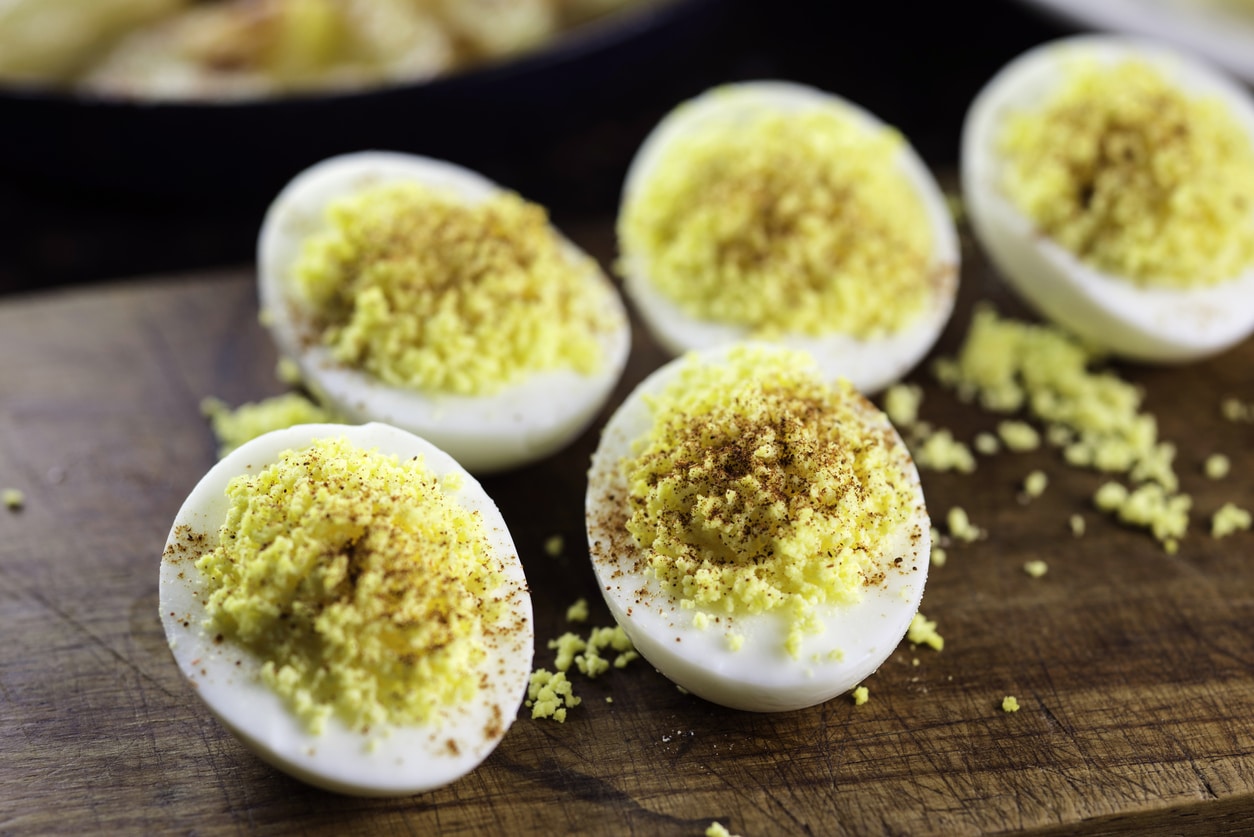
5. Hard-Boiled Eggs
Keep some hard-boiled eggs in your freezer. They’re a simple, convenient snack with a fair amount of fat and protein to keep your appetite under control.
Occasionally, you’ll find hard-boiled eggs at your local convenience store. They’re the ultimate snack, packed with vital vitamins, protein, and minerals. In fact, the egg white contains over half of the protein, along with vitamin C, lots of B vitamins, copper, iron, zinc, and selenium.
One big hard-boiled egg contains less than one trifling gram of carbs. Make sure to also eat the yolk as it contains all of the vitamins.
6. Raw Vegetables
Raw vegetable snack packs are becoming a pretty common sight in grocery stores.
Celery is a great choice with only a gram of carb in a 3-ounce serving. Meanwhile, three ounces of broccoli and carrot have 3 and 6 grams of carbs respectively.
You can dip your veg in peanut butter, low-fat or non-fat Greek yogurt, hummus, or low-fat cream cheese.
7. Beverages
It’s never been easier to find a low-carb drink in the grocery store.
Some great virtually carb free snacks include diet soda (0 carbs), unsweetened coffee or tea (0 carbs), unsweetened vegetable juice (11 gm), plain low-fat milk (11 gm), and coconut water (9 gm of carbs).
Another great option is plain sparkling water, which can lessen your hunger until you get back home.
8. Kale Chips
Kale is a low-carb snack, so you can munch a bit more of this delicious green without actually going too fat with calories.
It’s also nutrient-dense, and eating fewer carbs while keeping the micronutrients high is essential for your overall health.
For example, kale is loaded with B vitamins, which are crucial for converting carbs, proteins, and fats into energy. If you don’t receive enough B vitamins, your metabolism gets into sloth mode.
To make simple and quick low carb chips, drizzle kale leaves with ultra virgin olive. Add some pepper and salt to taste. Bake for 10-15 minutes at a temperature of 350 degrees.
Remember, 100 gm of kale has just 8 gm of carbs and 4 gm of plant-based protein. Enjoy!

9. Greek Yogurt
Yogurt is a breakfast favorite for many of us, but it’s also perfect for dessert. Greek yogurt is low in sugar and fat and full of protein, so long as you buy the unsweetened variety.
It’ll keep you satisfied for several hours, making it an amazing snack. You can also sweeten Greek yogurt with cinnamon and add chia seeds for extra energy, fiber, and calcium.
Greek yogurt is basically high in flavor and low in carbs.
10. Hot Dogs
You can take this snack as a last resort if you don’t find anything else to eat in the store. But make sure to chuck the bun! Regardless of the bad rap they’ve received, hot dogs are absolutely fine in a pinch, providing 2 gm of protein and just 2 gm of carbs.
Although high in cholesterol and sodium, hot dogs make for a much healthier snack than a store-bought brownie (21 gm of carbs) or a pack of potato chips if you’re trying to eat healthily and stay in shape.
Final Verdict on Low-Carb Snacks
It’s quite hard to stay healthy when your freezer is filled with chips, cookies, and donuts.
Instead of gorging on high-carb snacks that’ll pile on the pounds, give these low-carb snacks a try. You can easily make them at home or get them at your local convenience store.
Our 9-week challenge can help transform your body from the inside out as you embrace healthy snacks instead of calorie-filled chips and cookies.
Our 21 Day Body Transformation Challenge combines diet and exercise to transform your look. If you want to turn heads for the right reasons, find out more here.
-
Cardio vs Weightlifting: How to Decide Which Is Best for Your Weight Loss
Cardio vs Weightlifting: How to Decide Which Is Best for Your Weight Loss
You know how it goes.
You try to prepare healthy meals for yourself. Maybe you even count your calories. Sometimes, it just isn’t enough.
For those of us who want to lose weight, we need to add some exercise to our routine to see the best results.
With so many options, it can be hard to choose what’s best for you. Let’s talk about the two most popular types of exercise. Weightlifting and cardio.
Why Diet Doesn’t Always Cut It
This is a tough one to say because a good diet has so much to offer.
Don’t think that we’re saying diet isn’t important! You’ve probably heard the expression: “Abs start in the kitchen.” It’s true. Diet can account for the majority of our weight loss results. The issue is that for some of us, it just isn’t enough.
For some people, the problem is having too many cheat meals. For others, it’s simple genetics.
A proper combination of diet and exercise is the most effective way to lose weight. Let’s talk about the benefits.

Why Exercise is Important
Let’s start with the basics. To understand which form of exercise is right for you, we need to understand what we’re talking about.
We all know that diet and exercise can lead to a very healthy life, but why?
Here are just a few benefits of regular exercise, in any capacity:
Increased Energy
Okay, yes. Sometimes we leave the gym feeling exhausted. There is no denying it.
However, we still benefit from a lot of energy-boosting hormones that develop the more we exercise.
People who work out tend to get better, more effective sleep. This leads to significantly improved levels of energy throughout the day. No more feeling tired at work!
Check out the best times to exercise for better sleep.
Improved Mood and Brain Health
Exercise is known for the benefits to your body. It can go a long way for your overall health, too.
Regular exercise releases hormones and neurotransmitters. These include:
- Serotonin – Known as the “Happy Hormone”. It regulates mood, social behavior, sleep, memory, and digestion.
- Dopamine – Known for pleasurable effects, as well as improved memory and emotions.
- Norepinephrine – Promotes memory and focuses attention.
These neurotransmitters are naturally formed by your body. Keeping a healthy balance of them is believed to have a critical role in preventing conditions. These conditions include depression, anxiety, and even dementia.
If you haven’t heard enough reasons to start hitting the gym, we’re not even done!
Gaining Self-Confidence
This is an issue more and more people are struggling with. Whether we like it or not, we all want to look good.
Nothing helps build confidence like seeing results in the mirror. The best part: the results can keep coming!
Achieve the body you’ve always wanted, and learn to be happy with how you look!
Increased Strength and Endurance
This is the one we hear about the most.
Have you ever been out of breath after walking up a couple flights of stairs? Maybe you’ve had an embarrassing moment trying to lift up something heavy. We’ve all been there.
This is avoidable. Regular exercise can get us in shape, and build our strength!
Clearly, there are a lot of benefits to exercise. Enough to fill up a book. So let’s talk about the most popular types of exercise.
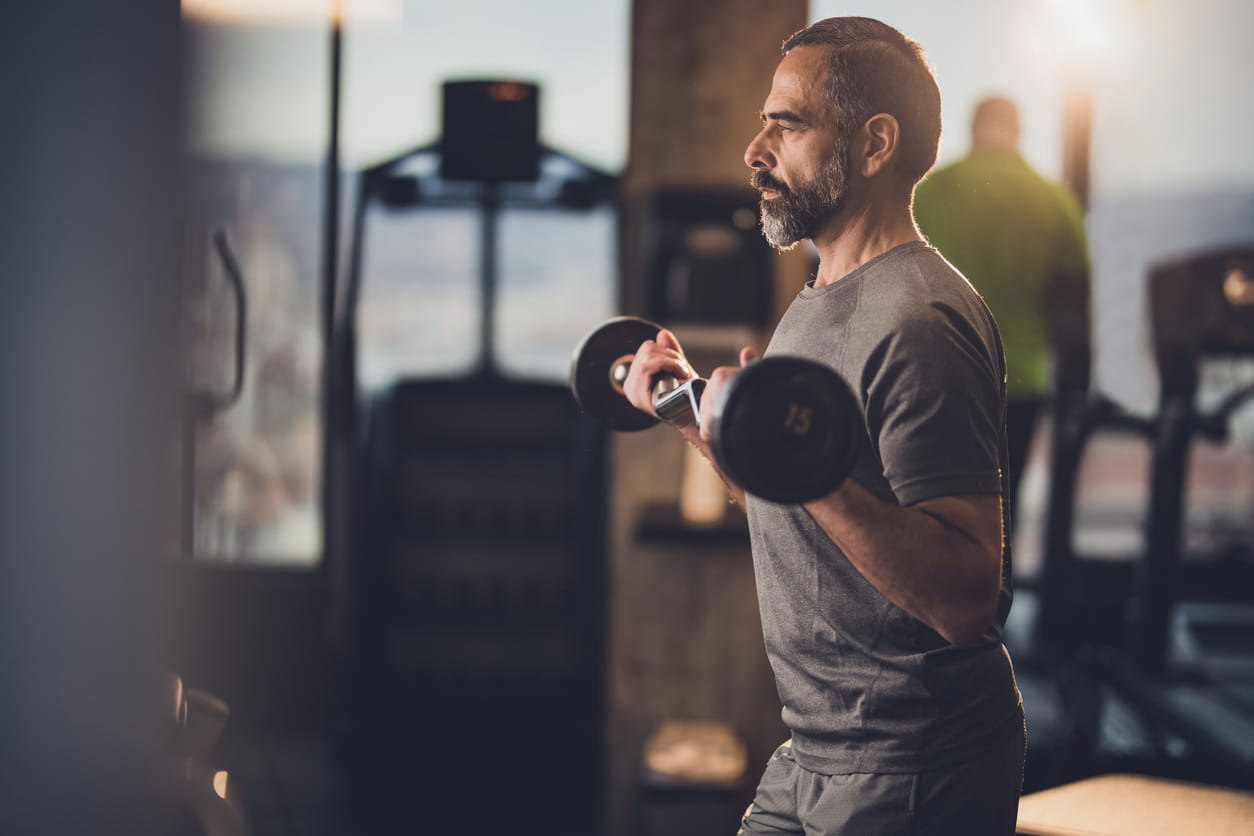
Weightlifting
Strength training has been a popular and effective tool for humans since the start of their existence. But everything evolves.
There are so many different forms of strength training, it’s hard to keep track. So let’s only talk about lifting weights, which has a few subcategories of its own.
Let’s discuss the most popular.
Machines
Weight machines are a new development and are very popular. You’ll see them in almost every weight room.
There are a lot of benefits to machines, including:
- Ease of use – Machines do not require training for form. There are usually images that will show you the proper movement. You also only need to move a pin to change the weight.
- Availability – Almost every gym now has incorporated machines into their equipment.
- Muscle growth – Varying your machine use is typically used for muscle growth, more than strength.
Let’s flip to the other side of the coin. Here are some of the downsides of machines:
- Isolation movements – Machines tend to focus on one muscle or one muscle group. Compound movements are more effective for gaining strength.
- Limited function – These are unnatural movements and do not translate well into functional strength.
- Can increase the risk of injury – With the unnatural movements involved, and the added weight, it can lead to injury.
Here is a helpful guide to weight machines if you want to learn more.
Free Weights
Using dumbbells and barbells is great for functional strength and muscular endurance.
Free weight exercises have a lot of benefits:
- Control and stability – Gain more balance and coordination by mastering the movements.
- Strength – You will see strength gains in free weight training a lot more than with machines.
- Function – Gain functional strength to help you with your daily activities.
The risks of free weight exercises include:
- Learning the form – This can take time, but it’s absolutely necessary.
- The potential for injury – This is especially true if we don’t learn the form!
These exercises can include a very wide variety. Here are some examples of free weight exercises.
Powerlifting
This is the best for pure strength. Powerlifting consists of only three functional movements:
- Squat – Mimics the motion of sitting down and standing up. Improves leg and core strength.
- Bench Press – Uses a pushing motion. Improves chest, tricep and shoulder strength.
- Deadlift – Practices the act of lifting something off of the ground. Works on core, back and leg strength.
The benefits of powerlifting are simple: building strength.
The downsides are just as clear:
- Training – There is lots of practice involved in learning the proper form to limit the risk of injury.
- Limited movements – You also commit yourself to train three specific movements. That’s not to say you can’t incorporate other training with it. Most powerlifters do.
So we’ve learned a bit about the different forms of weightlifting. You can learn more about weightlifting here. We will get into the benefits in a bit. For now, let’s talk about cardio.
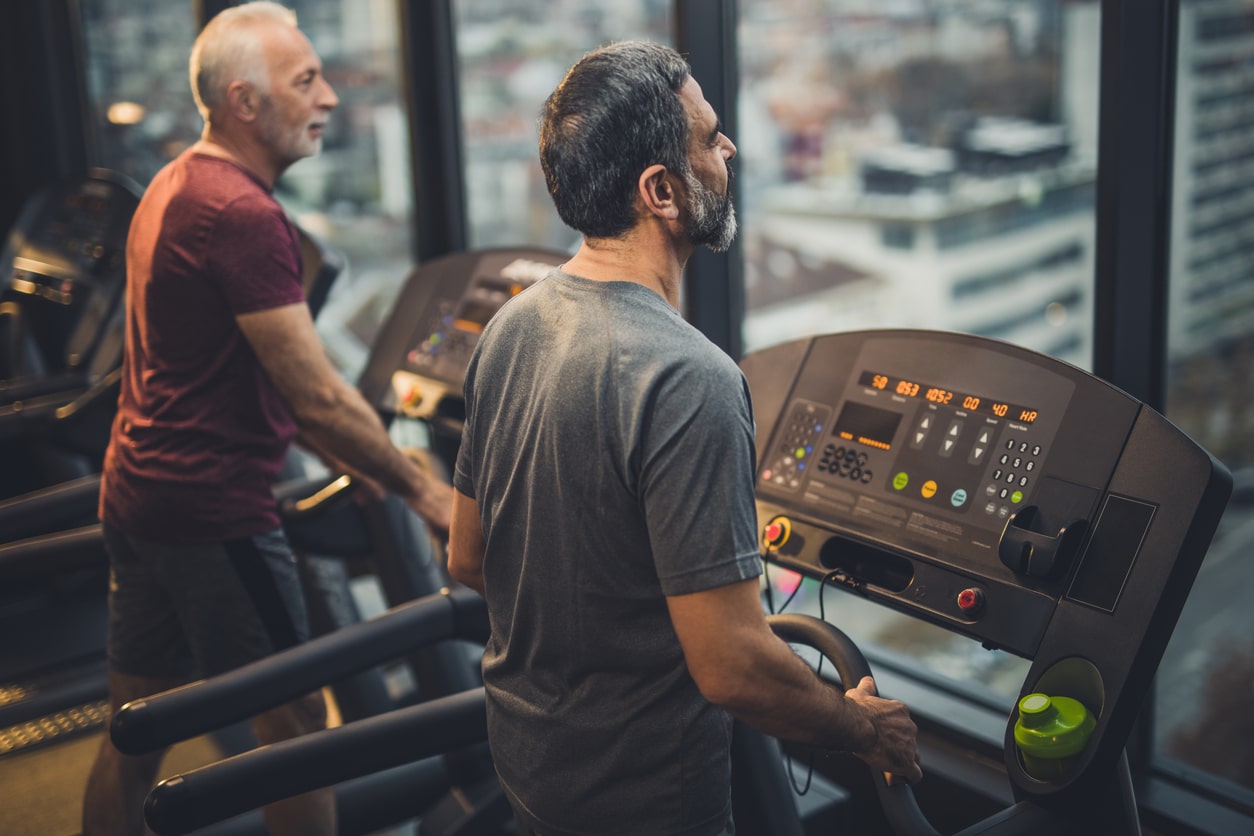
Cardio
Let’s dive into a few popular forms of cardio.
Machines
Every gym has some treadmills. This can be an easy way to get started.
We all know about other machines like:
- Elliptical machines – Not a very functional movement, but great for burning some calories!
- Stair climbers – These are excellent for cardio, but they wear you out quickly.
- Stationary bikes – Very popular and easy to use.
These are great. The most obvious downside is that it can get boring. Staying in one place the whole time can make you lose your motivation.
An added bonus is that a lot of these machines will give you feedback. Many will even estimate the number of calories you burn while using them.
There are a lot of different cardio machines out there. Here is a guide to the best and worst cardio machines if you want to learn more.
Running
This is something you can do anywhere.
Whether you’re jogging or sprinting, running can be very beneficial.
Find out which type of running is better for you.
Circuit Training
This could be anything. It often involves strength training, but typically with body-weight movements.
Circuit training can apply to pure weight training, as well.
For cardio, it can apply to combinations of running, jumping rope, or anything you can think of.
Check out some ideas on how to develop a circuit training routine.
Weightlifting and Cardio: Which is Better?
We’ve gone over a lot about how weightlifting and cardio differ. So which one is better? Let’s quickly summarize and talk about their benefits and risks.
Benefits of Weightlifting
Let’s discuss the overall benefits of weightlifting that all types share:
- Increased metabolism – This is a big key to weight loss. Your starving muscles become a fat-burning machine. Calories burned lifting weights are not as much as with cardio. That’s during the workout. The “afterburn” more than makes up for it.
- Improved strength – This can help you in your everyday life, in more ways than you would expect.
- Long-term benefits – It is easier to get out of shape than to lose strength. On top of that, the metabolic benefits tend to last longer with weight training.
Let’s also debunk the myth that lifting weights will make women too bulky. It’s not a risk unless you are training for it.
An added bonus with weightlifting is you have more freedom. There is a large variety of movements. On top of that, you can change up your weight and rep scheme with ease.
Also, weightlifting can be fun! A lot of people get bored with cardio and other exercises. Weight training can be new and exciting almost every time you start a session.
There are a lot more benefits that we haven’t discussed. Talk to a personal trainer or click here to learn more.
Risks of Weightlifting
Let’s face it, you can have all of the practice in the world. It can be any type of weightlifting. There is a higher potential for injury.
Luckily, there are skilled personal trainers out there to help you avoid this.
On top of that, you are more likely to feel sore after a strength training workout. While beneficial, this can be a pain. Literally.
Weightlifting can be tough for beginners. The more you train, the more you gain. The risks will take care of themselves with proper training and consistency.
Benefits of Cardio
There are a lot. Cardio is largely associated with the health benefits that we discussed at the beginning. Let’s go over just a few:
- Fewer restrictions – Cardio can be done anywhere, at any time. No need for equipment.
- Heart health – It’s in the name.
- Burning calories – This is cardio’s claim to fame.
- Brain health – Cardio is a big help for releasing the hormones and neurotransmitters we discussed. There is really nothing better for it.
It’s easy to see why cardio can be appealing. You can let your mind wander and perform your tasks without thinking about it too much.
You also have the benefit of a pleasurable feeling the next day. There is less risk of feeling sore.
Obviously, these rewards don’t come without risks.
Risks of Cardio
One possible side effect of cardio is the loss of muscle. This is especially true for distance runners and joggers.
Another issue is exhaustion. Doing extensive amounts of cardio can lead to a hard desire to go to bed.
Last, but not least: fat retention. That’s right. Over-training with cardio can make your body adapt to stress. This can make your body lose muscle, and lower your metabolic rate. Research about the pros and cons of cardio to learn more.
No good thing comes without downsides. There are ways to avoid these. The longer you keep up with your training, the easier it gets.
Check out the 6 crucial facts of cardio to learn more.
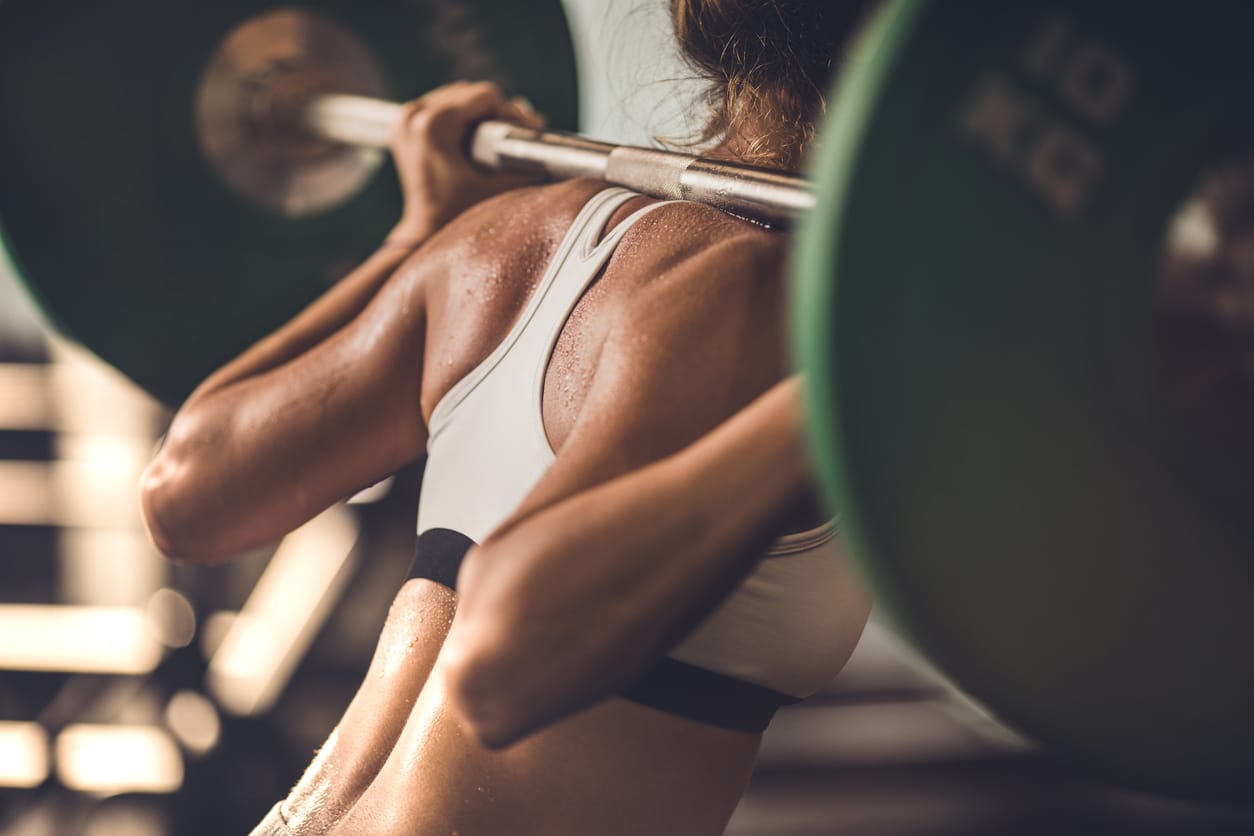
The Winner
The edge has to go to weight lifting. The benefits of the “afterburn” are too hard to pass up. That increase in metabolism is extremely helpful in losing weight.
This is not to say that a combination of the two is a bad idea. There is nothing wrong with running and lifting weights. Cardio and weightlifting can go hand in hand.
Think about it. The stress reduction and other health benefits of cardio? The strength and metabolism boost from weightlifting? They make a great pair.
None of this can be accomplished without getting started. If you’re already doing cardio, and want to change it up, read up on how to start weightlifting now!
What’s Right For You?
Honestly, there is no right answer here.
The best advice we can give is to utilize the best of both worlds. Weightlifting and cardio. Or at least to try them both out and see what is best for you. Sticking to the plan is the most important part.
Either way, we’ve learned the benefits of exercising. There’s no need to wait. Now is the best time to start losing weight!
Click here to check out our 21 Day Body Transformation Challenge and get started today!



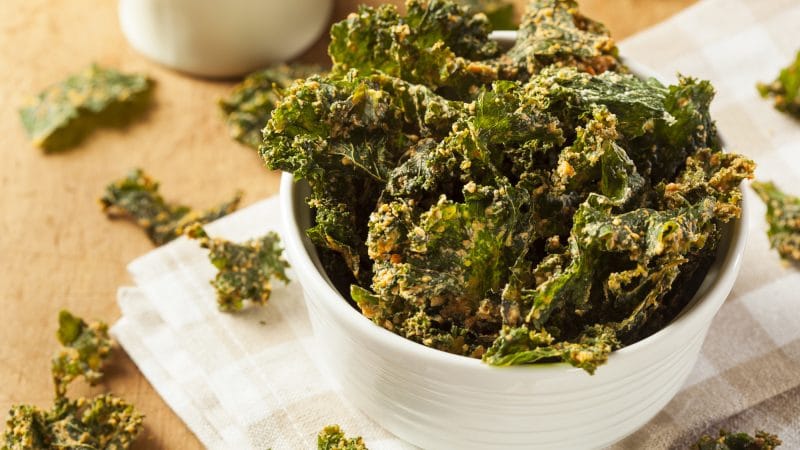


Recent Comments